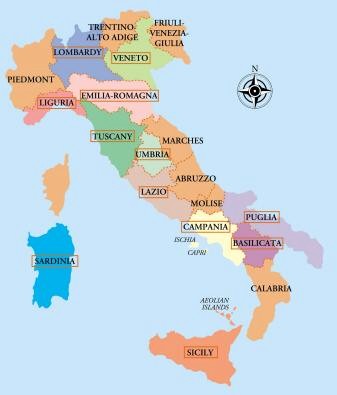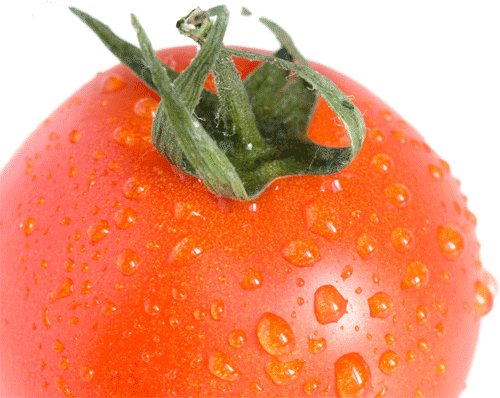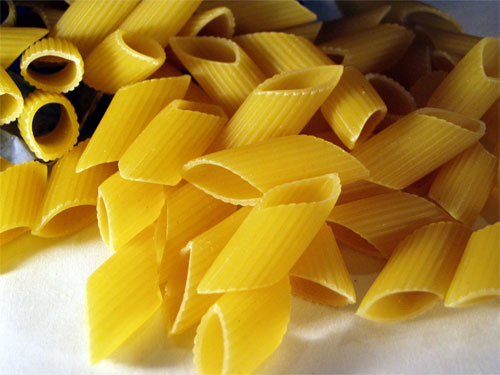Risotto – Better prepared In U.S. than any Pasta dish. I have no idea why this is, but, I can guess.
For one, Risotto is surprisingly easy to make. Despite all the hoopla and magic surrounding it any fifth grader can prepare Risotto with ease. Another reason is that Americans are accustomed to eating steamed rice. That’s much chewier than boiled rice. Most Pasta experiences Americans have are overcooked versions. That lends itself to bland, gooey aberrations of traditional flavors.
Risotto lends itself to endlessly different flavor combinations. The delicious, creamy, yet nutty blandness of Arborio rice is a perfect transfer medium. Growing up my favorite Risotto was one my mother, Lucrezia, made. She used Asparagus, pancetta (bacon), and Gruyere Cheese in the Risotto.
Here’s how to make Lucrezia’s incredible Risotto with Asparagus, Bacon, and Gruyere Cheese:
Asparagus Risotto – serves 6 people
- Asparagus – 2 large bunches
- Bacon – 1lb. plain, non-smoked
- 2 cups Arborio Rice
- 2 Medium White Onions – chopped very fine
- Gruyere Cheese – 1/2 lb. grated
- Sea Salt
- Black Pepper
Broil the pound of bacon in a drip pan until crunchy brown. Set aside on paper towels and let dry. Save all the drippings.
Boil one bunch of asparagus in about two quarts of water until very soft. Takes about 15 minutes. Remove the hard, tough ends with a knife before cooking. Remove and drain well. SAVE all the cooking water and the drained water.
Next, blend or food process the overcooked asparagus until you have a nice smooth slurry of asparagus. Add some of the cooking water, OR STOCK, if necessary to get a smooth, runny mix.
In a large pan (the more surface area the faster and better the Risotto will cook). Over a high heat, sauté the two medium onions and the 2 cups of Arborio Rice. Sauté them in some of the bacon drippings until golden brown, stirring the whole time.
Pour in the blended asparagus and begin stirring the rice. Add two or three large cooking spoons of the asparagus cooking water as needed. Stir until it is absorbed by the rice mixture.
 Add a few pinches of sea salt and plenty of coarse black pepper. Do this as you continue to stir. Make sure not to over salt the mix.
Add a few pinches of sea salt and plenty of coarse black pepper. Do this as you continue to stir. Make sure not to over salt the mix.
Keep adding asparagus STOCK to the rice. It needs to reach a tender, but still firm texture. And has thrown off its creamy starchiness to the mix.
Then add the second bunch of asparagus. Be sure to trim all the tough end pieces and cut up into two inch sections. Stir the chopped, fresh asparagus in for about two or three minutes. Stir until tender, using a spoonful or two of cooking water if necessary.
Just before serving crumble up the crunchy bacon into bits and add to the mix. Then add the 1/2 lb. of grated Gruyere Cheese to the Risotto and stir. Top each serving with a spoonful of bacon drippings and additional grated Gruyere. Serve immediately as the dish will continue to cook while it sits.
Entrepreneur and Raconteur. Has taken Kyle Phillips (former Principle/Blogger for the About.com
Guide to Italian Food) to task on several supposedly “authentic” Italian recipes.
 Despite its tiny size, Italy has a number of disparately different climates. That’s good for growing specific food crops in each of the climates. Climates range from desert hot in Sicily in the south to mountainous cold in Torino in the north. Regional dishes like Pasta and Eggplant are deeply influenced by Italy’s various climates.
Despite its tiny size, Italy has a number of disparately different climates. That’s good for growing specific food crops in each of the climates. Climates range from desert hot in Sicily in the south to mountainous cold in Torino in the north. Regional dishes like Pasta and Eggplant are deeply influenced by Italy’s various climates. Also, Pasta itself is an essential part of the Mediterranean diet. A recent analysis of The Mediterranean Diet, using the NHS as a basis, concluded that it reduced the risk of heart attack almost 30% and strokes by 13% as compared to conventional diets. Furthermore, study participants whose diets most closely matched the Mediterranean diet, that includes Pasta, were typically very healthy. And had a 39% reduction in combined coronary heart disease and stroke mortality. That’s compared to women whose diets least matched it. Teresa T. Fung, Sc.D., lead author of the Mediterranean diet study and associate professor at Simmons College and adjunct associate professor in nutrition at Harvard was quoted: “Those are dramatic results. We found that women whose diets look like the Mediterranean diet are not only less likely to die from heart disease and stroke, but they are less likely to have those diseases.”
Also, Pasta itself is an essential part of the Mediterranean diet. A recent analysis of The Mediterranean Diet, using the NHS as a basis, concluded that it reduced the risk of heart attack almost 30% and strokes by 13% as compared to conventional diets. Furthermore, study participants whose diets most closely matched the Mediterranean diet, that includes Pasta, were typically very healthy. And had a 39% reduction in combined coronary heart disease and stroke mortality. That’s compared to women whose diets least matched it. Teresa T. Fung, Sc.D., lead author of the Mediterranean diet study and associate professor at Simmons College and adjunct associate professor in nutrition at Harvard was quoted: “Those are dramatic results. We found that women whose diets look like the Mediterranean diet are not only less likely to die from heart disease and stroke, but they are less likely to have those diseases.” In a perfect world it is every cook or chef’s dream to walk out the back door of their kitchen and harvest, with their own hands, all of the ingredients for the meals they prepare. At one time, even in the U.S. this was a distinct possibility. According to the U.S. Department of Agriculture the number of farms peaked in 1935 at 7 million. By 1997 that number had fallen to 1.7 million. This meant that locally grown, harvested that day food, is fewer and farther between everywhere in the U.S.
In a perfect world it is every cook or chef’s dream to walk out the back door of their kitchen and harvest, with their own hands, all of the ingredients for the meals they prepare. At one time, even in the U.S. this was a distinct possibility. According to the U.S. Department of Agriculture the number of farms peaked in 1935 at 7 million. By 1997 that number had fallen to 1.7 million. This meant that locally grown, harvested that day food, is fewer and farther between everywhere in the U.S.